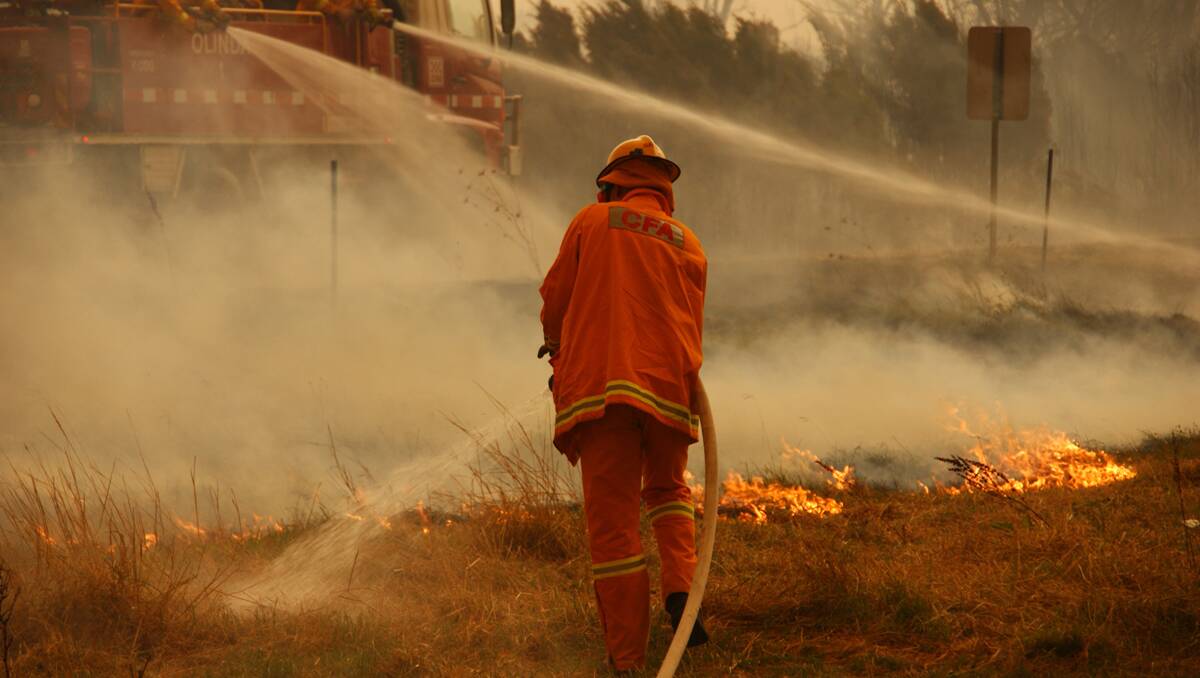REGION - The warm start to spring has only added weight to warnings from fire authorities that the region faces an above average risk of fire this bushfire season.
Subscribe now for unlimited access.
or signup to continue reading
Authorities are signalling that above average winter temperatures combined with a wet spring has created the recipe for rapid grass growth and high fire danger.
The Bushfire Cooperative Research Centre released its seasonal bushfire outlook for the south of the country last month and found the region could expect above normal fire potential.
The outlook found that forests are expected to be more flammable than normal due to the lingering effect of last summer's extreme dryness and heat.
Current expectations are for average to above average grass growth in western Victoria, based on receiving average to above average rain during spring.
Country Fire Authority District 16 Operations Manager, Chris Eagle said even in the event of a normal fire season the danger to life and property is still present.
"Last year was an average fire season, but we witnessed fire activity and grass fires that were very fast moving," he said.
"Grass fires travel at speed, sometimes six to eight kilometres in an hour. They are so easy to start and take hold anywhere across the landscape."
Mr Eagle said people need to clean up their land early and make sure they have a home fire safety plan and know what to do in the event of a fire.
"Talk to your neighbours, friends and relatives about your home fire plan so that will hopefully prompt them to do the same."
CFA spokesperson, Gerard Scholten said although they don't have specific statistics on the number of people with bushfire survival plans he said it is no where near enough.
"We did some research about three years ago that found 75 percent of people who live in high risk areas have a bushfire survival plan, we think this is a little low," he said.
Mr Scholten said there are a number of tools on the CFA website to assist people to take action to better understand the risk and do something about it.
"There is a home bushfire advice service where experts can come and look at your property, look at aspects including risk and how to best clear the vegetation, maintain your property and prepare access to your property in the event of a fire.
"People can also get a fire ready kit, but the best thing to do is speak to your local brigade and chat to them about the risk because they can offer practical advice.
"It is important people do this now because in this part of the world the fire season comes a little earlier."
CFA Chief Officer Euan Ferguson has also called on the community to start preparing for the fire season now.
"The grass is going to start growing very quickly from now on so people need to work out their fire prevention plan. Farmers need to identify where their fuel breaks are going to be and they need to start preparing those now," he said.
"There is some underlying dryness in forests in the western part of the state and that is the drought that we are still getting over.
"Even though there has been a lot of rainfall and there's a lot of surface moisture, talk to farmers; people who are digging fence posts and they are saying it is dry underneath."
The Bushfire Cooperative Research Centre indicated the timing and severity of grass fires will depend strongly on rainfall patterns throughout spring.
The conditions, coupled with above average temperatures across the country since January 2013, have resulted in a build up of fuel in grasslands.
"So the forest areas we believe are going to dry out very quickly and with that strong grass growth the message is get ready because if it dries out in January, February and March we are going to have a real fire season again," Mr Ferguson said.
The fire danger period commences across our region at varying dates in October and November. It can stay in place until as late as April next year depending on the conditions.


